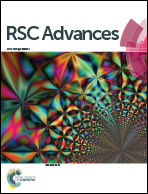The intracellular source, composition and regulatory functions of nanosized vesicles from bovine milk-serum
Abstract
A hypothesis that the source of milk-serum derived vesicles (MSDVs) is the Golgi apparatus (GA) was examined. Using dynamic light scattering and electron microscopy, it was shown that MSDVs are composed of globular structures with hydrodynamic sizes of 70 ± 15 nm. More than 60% of the total protein content of MSDVs was associated with the MSDV lumen and 30% was associated with the MSDV membrane. Casein was the major protein found in the MSDV lumen. The conclusive markers of the GA, lactose synthase components (α-lactalbumin and galactosyltransferase) and activity (synthesis of lactose from glucose and UTP-galactose), the presence of casein in micellar form in the MSDV lumen, and a high luminal content of citric acid, were demonstrated in the lumen of MSDVs. Though MSDVs composed only 0.7% of the milk mass, they accounted for a high proportion of the total milk content of reactive (15% Cu and 18% Fe) and toxic minerals (60% Cd and 65% Pb), which strongly suggests that MSDVs serve as an avenue to protect mammary epithelial cells from the toxic effects of these minerals by storing them intraluminally and secreting them into milk. The presence of micellar casein in the MSDV lumen, along with the presence of metal transporters in their membranes, is responsible for this impressive capacity for storing reactive and toxic minerals. Exposing a single mammary gland to lipopolysaccharide challenge induced changes in regulatory proteins stored in the lumen of MSDVs (tissue plasminogen activators, plasminogen and plasmin) and in the activity of xanthine oxidase and alkaline phosphatase attached to the outer membrane of MSDVs. Thus, we have demonstrated that MSDVs are under the regulation of the nucleus and respond to extracellular signals.


 Please wait while we load your content...
Please wait while we load your content...